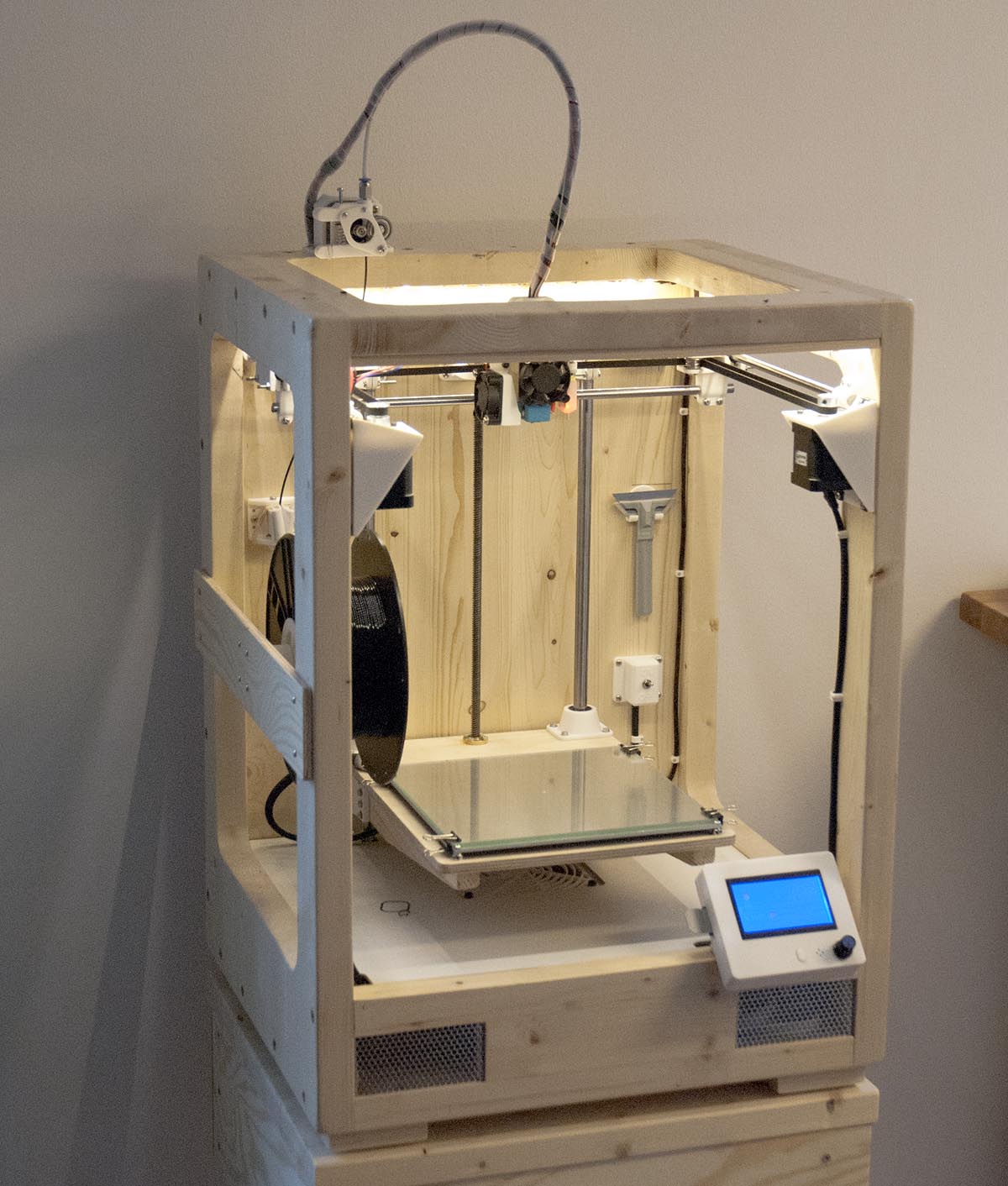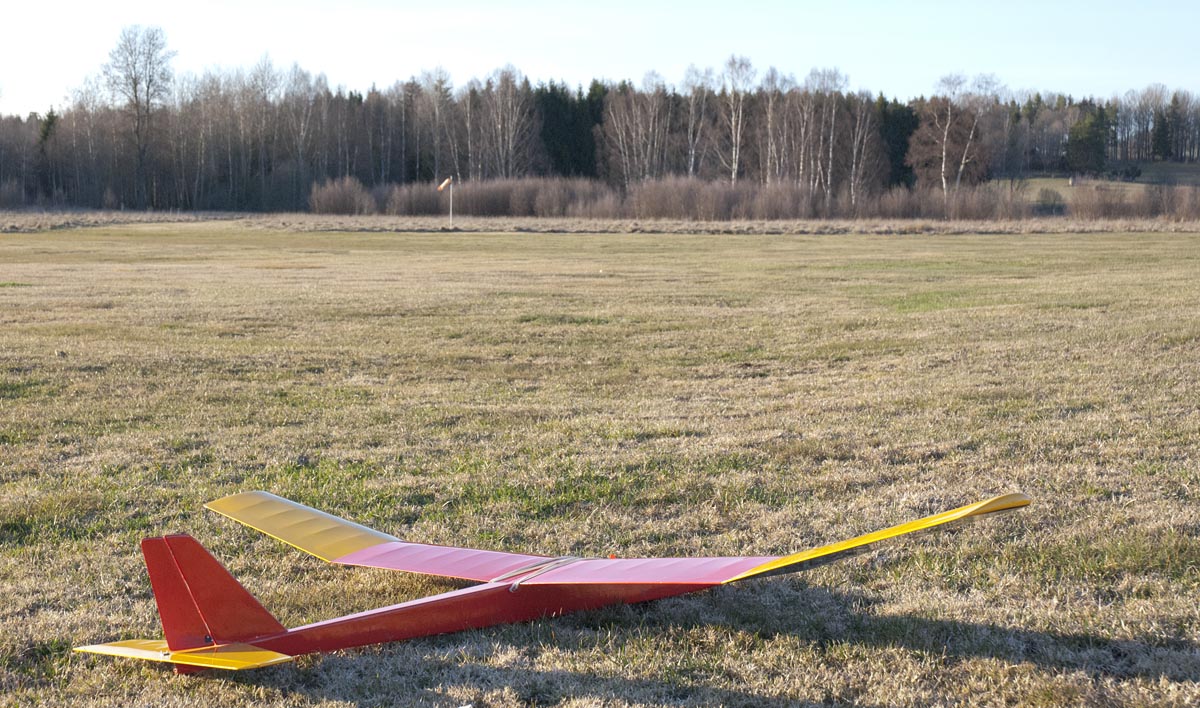I bought this airplane used from a friend in my local RC flying club a few months ago. The model is a Windstar from Thunder Tiger. It is a three channel electric glider with elevator and rudder. The wingspan is about 2 meters. The airplane was old and used a lot. I started by removing all the covering film and replaced some broken wood parts. I rebuilt the nose of the fuselage to fit my needs with a large magnetic battery hatch. I also modified the wing tips and removed the original plastic ones and replaced them with balsa wood. After all repairs and modifications was complete I covered the airplane again using a Oracover, yellow and red on the top side and black on the bottom.
My homebuilt DIY 3D printer
This video shown my homebuilt DIY 3D printer. It is a CoreXY design with a wood frame and 3D-printed parts.
Link to the page with more info and images: 3D printer page

Real time procedural water demo
I added procedural water in the “Procedural terrain engine”.
Normally when creating water one often use tiling Du-Dv and Normal textures to create distortion effects and lighting. This is how I did it in the Realization Engine. Here I am generating those textures procedurally on the GPU in real time instead. This allows me to adjust diffrent parameters to change the look of the water. It also removes the repeting patterns in the water that are clearly visible when using texture images that are loaded from the disc.
Procedural terrain engine is my own graphics engine I have written In C++ using OpenGL, GLSL and GLFW to experiment with procedural generation of different typs.
Robot and Rocks – game trailer
I worked on this project mostly during this summer with the purpose of learning more about the game engine Unity and game development in general. In the last couple of weeks I have tried to finish all the features I stated to implement, and make a playable game out of it. This Game is also my entry in the annual “LiU Game Awards” competition.
You can download the game and try it for yourself here: http://robotandrocksgame.brinkeby.se
Line Following with the Prototype Rover 1
Reed about this new robot here: Prototype Rover 1 page
Obstacle avoidance with the Prototype Rover 1
I have built an obstacle avoidance robot I built to test a few ideas I had and learn more about what it takes to make robot robot that can navigate around an indoor environment without getting stuck on things. I will also use this robot to experiment with line following and maybe line-maze solving in the future.
You can reed more about this new robot here: Prototype Rover 1 page
Airshow: Försvarsmaktens Huvudflygdag 2016
Some videos I shot while visiting the airshow “Försvarsmaktens Huvudflygdag 2016”.
Part 1/3:
Ö1 Tummelisa
Hughes 269
Bell 206
SK 50, Saab 91 Safir
SK 60, Saab 105
Breitling Wingwalkers, stearman
J26 Mustang
Part 2/3:
Viggen
JAS 39 Gripen
F-16AM
F/A-18
Part 3/3:
Blackhawk UH-60
Agusta A109
Balancing robot rebuild
I have rebuilt my balancing robot. The reason was that I wanted to fit more sensors and functions, and there where no space for that in the previous design. I have also rewritten all the code and replaced the Kalman-filter I previously used for angle estimation with a complimentary filter instead. This in combination with a higher center of mass have made the robot a lot more stable and tolerant against pushes and other disturbances.
A Kalman-filter should work better than a complimentary filter, but the Kalman-filter is a lot more complicated. Since I do not understand exactly how the Kalman-filter worked, it was to hard for my to tune it properly. The estimated angle of the robot was reacting to slow. My current solution with a complimentary filter is much more responsive. That allowed me to increase the parameters of my PID regulators to make the robot more stable.
Airshow: Västerås Rollout 2016
Some videos I shot while visiting the airshow “Västerås Rollout 2016”.
Part 1/3:
Douglas DC-3
Noorduyn Norseman
Piper PA-12 super cruiser
De Havilland DH 114 Heron
North American AT-16 / SK16
Part 2/3:
Klemm 35
SAAB 91 Safir / SK 50
North American AT-16
De Havilland DH 115 Vampire
De Havilland DHC-1 Chipmunk
Part 3/3:
Sukhoi Su-29
North American P-51 Mustang
Douglas A-26 Invader
BushBeast 2 build video
This video shows the building process of the BushBeast 2, my new balsa airplane.

